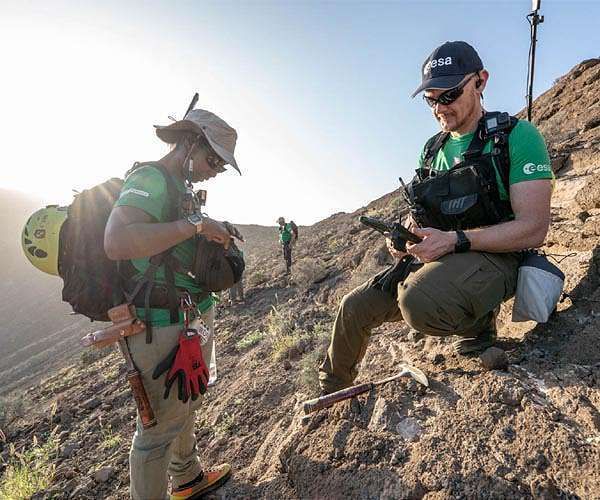9.10.2024

A new camera designed for the Moon has become a key tool for astronauts during ESA's latest PANGAEA geology training session in Lanzarote, Spain. Engineers, scientists, and astronauts tested the Handheld Universal Lunar Camera (HULC) as part of efforts to refine its design for NASA's Artemis missions to the Moon.
The international team evaluated various features of the camera, including telephoto lenses, flash settings, and a new eyepiece, all aimed at enhancing performance for lunar exploration. The camera, based on a modified Nikon model, is designed to withstand the extreme conditions of the Moon, with a thermal blanket protecting it from temperatures ranging from minus 200 to 120 degrees Celsius. Its buttons have also been modified for use by astronauts wearing bulky gloves.
ESA astronauts Rosemary Coogan and Arnaud Prost, alongside JAXA astronaut Norishige Kanai, tested the camera in lunar-like conditions to gauge its effectiveness for geological studies on the Moon.
NASA's Jeremy Myers, the HULC project lead, explained, "If the crew wants to see farther beyond the landing site, a telephoto lens would allow them to take images of distant objects and decide which way to explore." During the trials, the 200 mm telephoto lens captured an impressive amount of detail, offering a new level of clarity that could be vital for future Moon missions.
HULC is set to be the first mirrorless camera used on the lunar surface, optimized for capturing sharp images in low-light conditions. As the Artemis III landing site is near permanently shadowed regions at the Moon's South Pole, the camera's ability to perform in dark environments was tested by taking images inside volcanic caves during daylight and darkness.
In another key test, an eyepiece was trialed alongside the camera's back screen. The astronauts provided feedback on how effective it was when used with a spacesuit, helping NASA's team refine the design.
"Inputs from the trainees help us refine the ergonomics and redundancy of the camera to make missions as productive as possible," Myers added. The testing process also underscored the importance of capturing high-quality images for documenting scientific discoveries during Moon exploration.
One challenge faced during PANGAEA was intermittent signal loss between the camera and the science teams, mimicking potential bandwidth issues on the Moon. This prompted the crew to test the ability to select and send only certain images back to mission control.
Reflecting on the test, Myers commented, "Every time we collaborate with ESA's PANGAEA, we get even more out of it than we had expected. At the end of the day, we all want to end up with the best product - a space-rated camera that will capture amazing Moon pictures for humankind."
For more images from the Artemis camera tests, visit ESA's PANGAEA gallery from the Lanzarote session.
Quelle: SD
